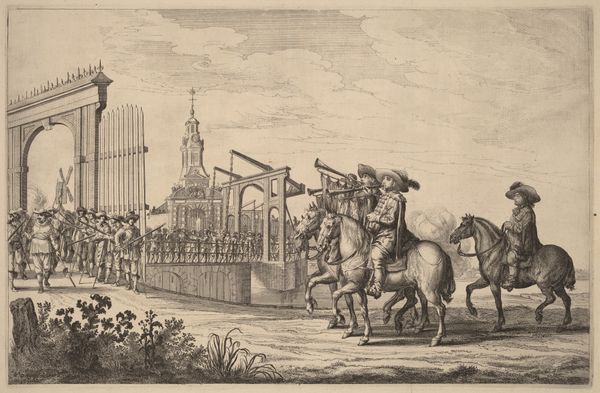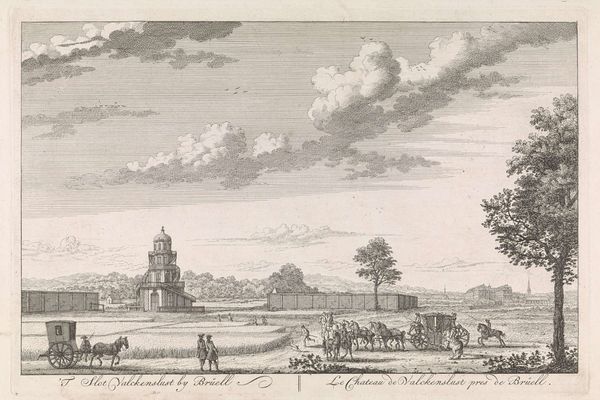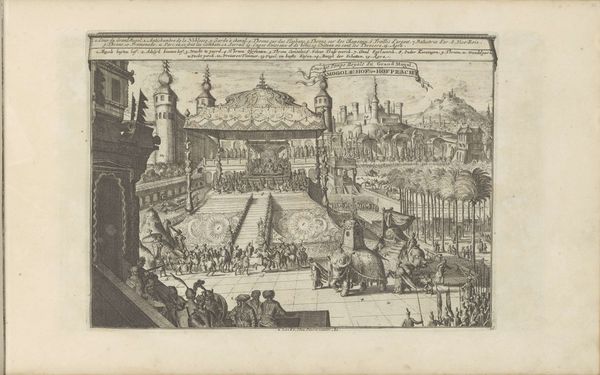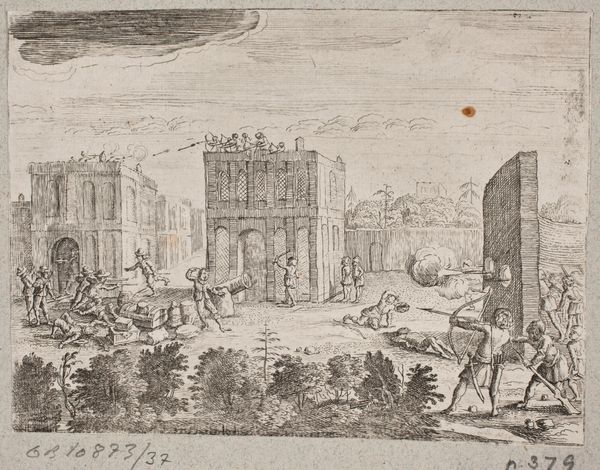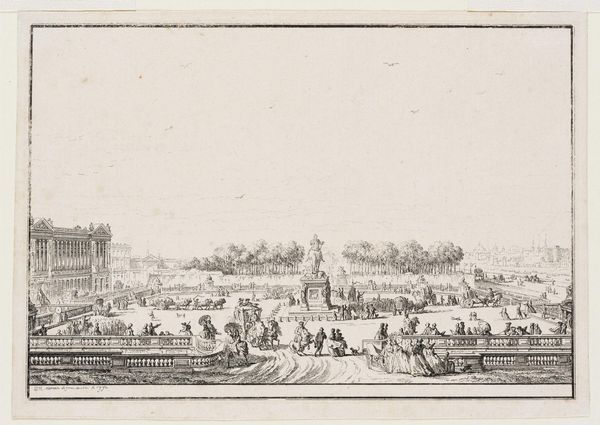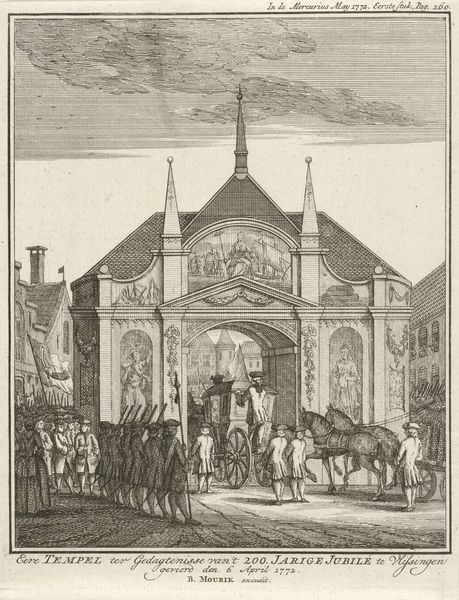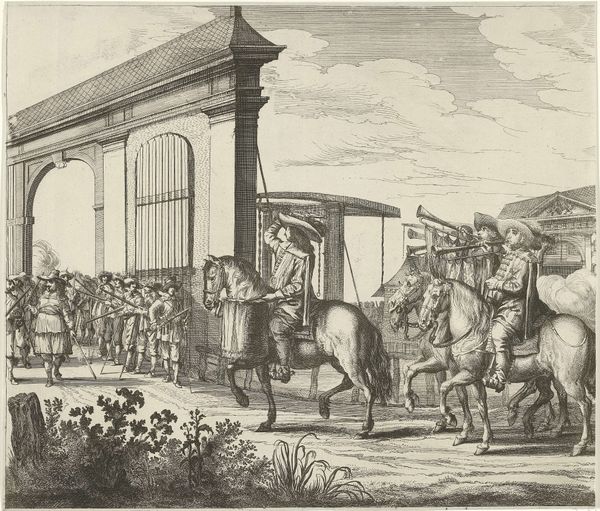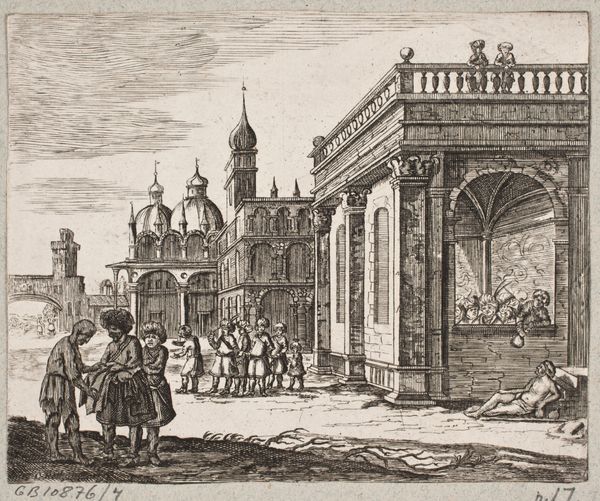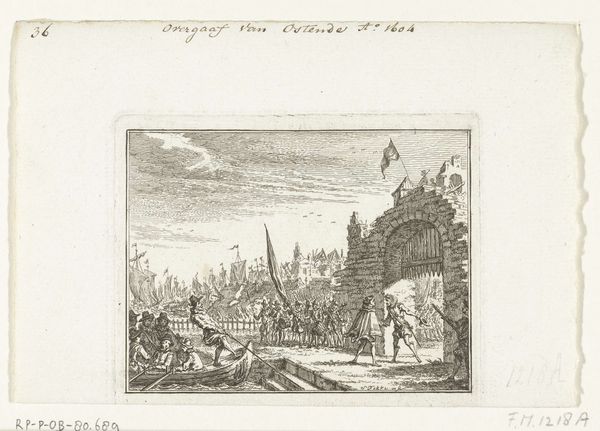
De intocht van Maria de' Medici te Amsterdam in 1638 (plaat 1) 1638 - 1639
0:00
0:00
janmartszendejonge
Rijksmuseum
drawing, paper, ink, engraving
#
portrait
#
drawing
#
narrative-art
#
baroque
#
paper
#
ink
#
cityscape
#
history-painting
#
engraving
Dimensions: height 196 mm, width 322 mm
Copyright: Rijks Museum: Open Domain
Curator: Jan Martszen de Jonge's 1638-1639 engraving, “The Entry of Maria de' Medici into Amsterdam in 1638,” offers us a glimpse into a meticulously orchestrated spectacle. The medium is ink on paper, creating incredibly fine details within this cityscape. Editor: It has a somber tone, wouldn’t you say? Even though it’s meant to depict a celebration, the intricate line work and muted tones lend it a kind of austere formality. Almost like witnessing history documented with cool detachment. Curator: I see it as more than documentation. The procession itself, carefully etched with the imposing architecture, is heavy with symbolism. The arches, the militia…it’s all carefully arranged to project power, specifically the might and prosperity of Amsterdam as it welcomes a significant, although controversial, figure. It communicates the established order. Editor: Right, and Maria de’ Medici certainly represents a complicated legacy of power and religious conflict in Europe. Amsterdam flaunts its grandeur but also, through hosting her, asserts its own political position and relative tolerance, or at least its pragmatic alliances. The very act of meticulously engraving this scene speaks to how the event itself served as propaganda. It’s about shaping a narrative. Curator: The symmetry also stands out. The deliberate arrangement mirrors a carefully constructed performance where every visual element carries symbolic weight. The arches, the figures precisely spaced... It's a calculated image intended to resonate with certain audiences. The details serve to legitimize Maria’s welcome and reinforce Amsterdam’s global standing. Editor: But I wonder about the perspective presented. By choosing to focus on the spectacle from a distance, almost detached, is de Jonge hinting at the limits of power, or the inherent artificiality of these displays? Does he present a counter-narrative despite his commissions? Curator: I am fascinated by how meticulously de Jonge balances civic pride and human transience, how the specific, almost map-like detail merges into an archetypal procession. It encapsulates themes that resonate beyond this event itself. Editor: Ultimately, de Jonge’s print shows the complexity inherent when art and politics collide. I appreciate how art like this becomes a battleground for narratives around identity, tolerance and legacy.
Comments
No comments
Be the first to comment and join the conversation on the ultimate creative platform.

